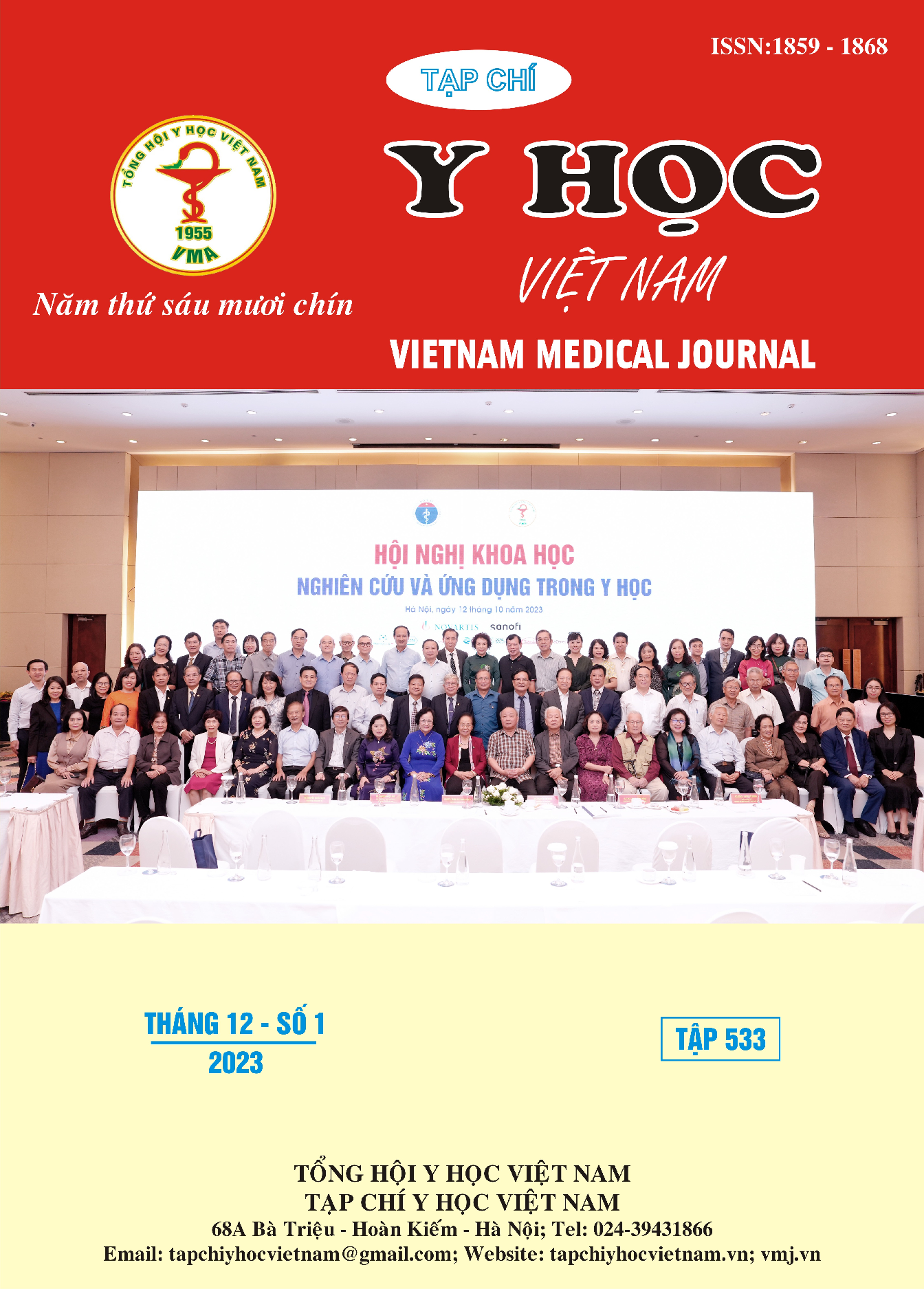ENDOMETERINE CANCER AFTER TAMOXIFEN: CLINICAL CASE REPORT AND LITERATURE REVIEW
Main Article Content
Abstract
Tamoxifen, an antiestrogen, is a popular medication to treat and prevent hormone-dependent breast cancer. Tamoxifen has become one of the most frequently used anticancer drugs worldwide. However, it comes with side effects, especially increasing the risk of endometrial cancer. This occurs after long-term use (>2 years), especially in postmenopausal women with pre-existing uterine pathology. In fact, due to its rarity, in Vietnam there have been no reports of this drug causing endometrial cancer. This article reports 2 cases of endometrial cancer after using Tamoxifen, thereby reviewing the medical literature on this side effect of the drug so that doctors can have notes and monitor when using the drug. Clinical case report: We report two clinical cases of endometrial cancer patients after using Tamoxifen to treat breast cancer at K hospital. Discuss: In this report, we discuss the mechanism and clinical characteristics of endometrial cancer after using Tamoxifen. Conclusions: Tamoxifen is a selective estrogen receptor modulator used for the treatment and prevention of estrogen receptor (ER)-positive breast cancer. However, tamoxifen increases the risk of endometrial cancer (EC) by approximately 2–7-fold, and tamoxifen users with EC have a worse prognosis[1]. Tamoxifen causes endometrial cancer through the agonist effect of tamoxifen on the ERα receptor on the endometrium and expression of G-protein-coupled estrogen receptor 1 (GPER-1). The risk of endometrial cancer can be minimized by detecting and treating endometrial diseases before initiating tamoxifen treatment. When using tamoxifen for a long time (> 2 years), close monitoring is required, especially when unusual symptoms appear, and the risks should be explained to the patient before treatment.
Article Details
References
2. Fleming CA, Heneghan HM, O’Brien D, McCartan DP, McDermott EW, Prichard RS. Meta-analysis of the cumulative risk of endometrial malignancy and systematic review of endometrial surveillance in extended tamoxifen therapy. Br J Surg. 2018;105(9):1098–106.
3. Jordan VC. The 38th David A. Karnofsky Lecture: The Paradoxical Actions of Estrogen in Breast Cancer—Survival or Death? JCO. 2008; 26(18):3073–82.
4. HU R, HILAKIVI-CLARKE L, CLARKE R. Molecular mechanisms of tamoxifen-associated endometrial cancer (Review). Oncol Lett. 2015;9(4):1495–501.
5. Ignatov T, Eggemann H, Semczuk A, Smith B, Bischoff J, Roessner A, và c.s. Role of GPR30 in endometrial pathology after tamoxifen for breast cancer. Am J Obstet Gynecol. 2010;203(6):595.e9-16.
6. Hoogendoorn WE, Hollema H, van Boven HH, Bergman E, de Leeuw-Mantel G, Platteel I, và c.s. Prognosis of uterine corpus cancer after tamoxifen treatment for breast cancer. Breast Cancer Res Treat. 2008;112(1):99–108.
7. Bland AE, Calingaert B, Secord AA, Lee PS, Valea FA, Berchuck A, và c.s. Relationship between tamoxifen use and high risk endometrial cancer histologic types. Gynecol Oncol. 2009;112(1):150–4.
8. Garuti G, Grossi F, Centinaio G, Sita G, Nalli G, Luerti M. Pretreatment and prospective assessment of endometrium in menopausal women taking tamoxifen for breast cancer. Eur J Obstet Gynecol Reprod Biol. 2007;132(1):101–6.


